Véronique Flamand
Mechanical Design Improvement of a Passive Device to Assist Eating in People Living with Movement Disorders
Oct 14, 2020Abstract:Many people living with neurological disorders, such as cerebral palsy, stroke, muscular dystrophy or dystonia experience upper limb impairments (muscle spasticity, loss of selective motor control, muscle weakness or tremors) and have difficulty to eat independently. The general goal of this project is to develop a new device to assist with eating, aimed at stabilizing the movement of people who have movement disorders. A first iteration of the device was validated with children living with cerebral palsy and showed promising results. This validation however pointed out important drawbacks. This paper presents an iteration of the design which includes a new mechanism reducing the required arm elevation, improving safety through a compliant utensil attachment, and improving damping and other static balancing factors.
Preliminary Development of a Wearable Device to Help Children with Unilateral Cerebral Palsy Increase Their Consciousness of Their Upper Extremity
Oct 12, 2020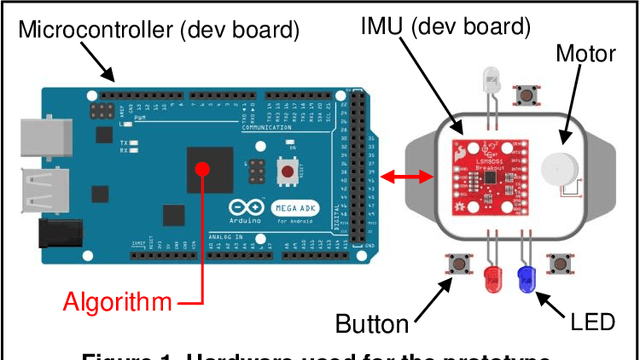
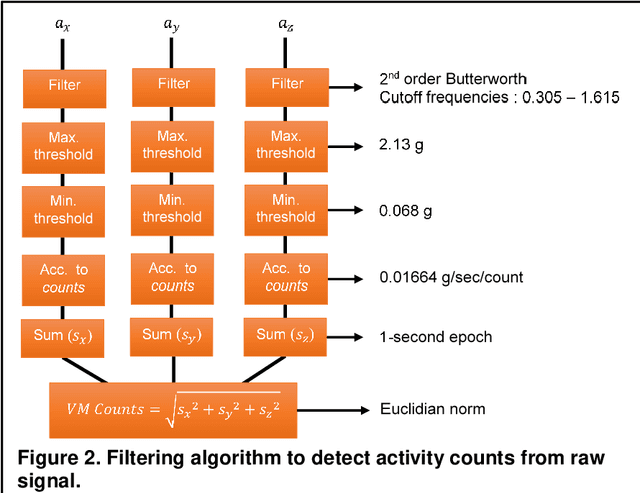
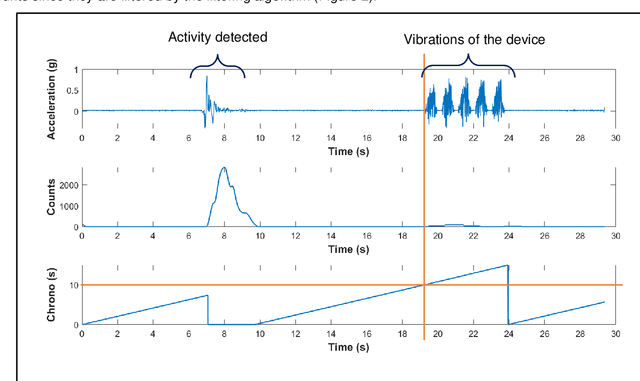
Abstract:Children with unilateral cerebral palsy have movement impairments that are predominant to one of their upper extremities (UE) and are prone to a phenomenon named "developmental disregard", which is characterized by the neglect of their most affected UE because of their altered perception or consciousness of this limb. This can cause them not to use their most affected hand to its full capacity in their day-to-day life. This paper presents a prototype of a wearable technology with the appearance of a smartwatch, which delivers haptic feedback to remind children with unilateral cerebral palsy to use their most affected limb, and which increase sensory afferents to possibly influence brain plasticity. The prototype consists of an accelerometer, a vibration motor and a microcontroller with an algorithm that detects movement of the limb. After a given period of inactivity, the watch starts vibrating to alert the user.
Preliminary design of a device to assist handwriting in children with movement disorders
Aug 06, 2019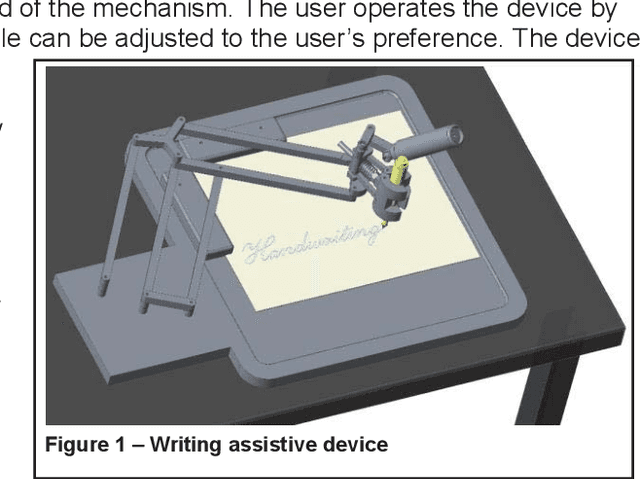

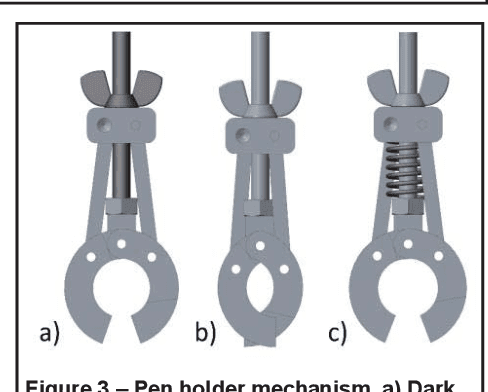
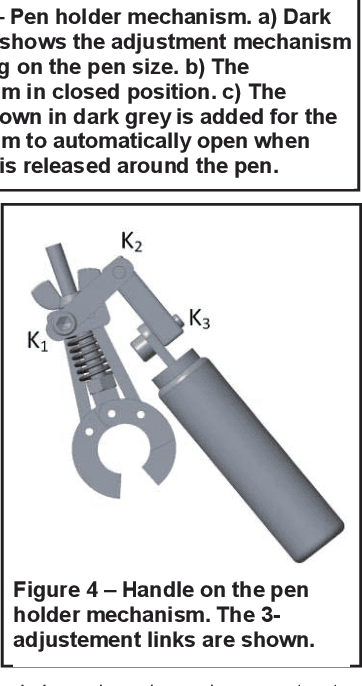
Abstract:This paper presents the development of a new passive assistive handwriting device, which aims to stabilize the motion of people living with movement disorders. Many people living with conditions such as cerebral palsy, stroke, muscular dystrophy or dystonia experience upper limbs impairments (muscle spasticity, unselective motor control, muscle weakness or tremors) and are unable to write or draw on their own. The proposed device is designed to be fixed on a table. A pen is attached to the device using a pen holder, which maintains the pen in a fixed orientation. The user interacts with the device using a handle while mechanical dampers and inertia contribute to the stabilization of the user's movements. The overall mechanical design of the device is first presented, followed by the design of the pen holder mechanism.
 Add to Chrome
Add to Chrome Add to Firefox
Add to Firefox Add to Edge
Add to Edge